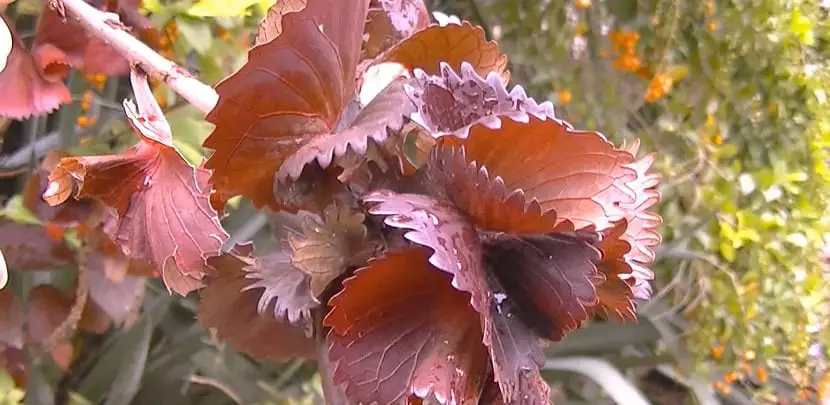
Today we are going to talk about a plant that is highly esteemed for its shrub contribution, its bright colors and its rapid growth that helps us with the variability of our garden.
It’s about the Acalifa. It belongs to the angiosperms, eucotyledons, class rosidsorder malpighialsfamily euphorbiaceae. It is native to the tropical areas of Southeast Asia and the islands of the Pacific. Do you want to know more about these plants?
Generalities
These plants are evergreen and are quite colorful. Its bearing is shrubby and it tends to grow quite fast. The leaves are large and deep green, oval.
Its peculiarities are the pendulous inflorescences, catkins, also long up to 15 cm that carry hundreds of little flowers, generally red, although there are species and varieties with ash-colored, green, and yellow flowers. The flowers of acalifa they are long-lasting and devoid of petals.
How to grow the Acalifah

These plants have little difficulty when growing them, but we do have to follow some necessary guidelines, if we want them to be healthy and grow well.
The three fundamental aspects to take into account to keep these plants in good condition are: high humidity, excellent lighting and a temperature that is not too low.
If the light is insufficient, the plants tend to line up, that is, to lengthen, losing a large part of their color and not producing flowers. However, it is also not advisable to leave them directly in the sun. For the leaves to be beautiful, we have to have our plant without direct sunlight.
If the humidity is low, our acalifa will lose its leaves relatively quickly. Regarding temperatures, must not drop below 15 ° C, especially at night.
Regarding irrigation, we have to take into account that the ground must be constantly humid, but without becoming flooded. To do this, the best thing to do is to water them using a vaporizer. The most suitable land for the acalifa is composed by peat and beech leaves so that it is slightly acidic (pH 5,5-6,5).
The acalifa fertilizer has to be abundant in the spring-summer period, since the demand for food is greater. Liquid compost can be used every 15 days during this period. In the rest of the seasons it is not necessary to use fertilizer, since the plant itself has the ability to grow and develop very quickly.
Flowering

When the acalifa begins to grow, the first flowers do not grow until the first year of age. Once it starts to bloom, it does so in a uninterrupted from spring to fall.
If we want to help the plant to flourish better, as the older flowers begin to fade, we must remove them to stimulate the growth of the new ones. At the end of the summer, the new shoots should be cut by half their length. This is a small pruning maintenance that the acalifa has.
Plagues and diseases
If we observe that the plant is continuously losing leaves it is not due to any disease, but there is a lack of humidity in the environment.
Now yes, if we see brown spots on the underside of the leaves it can mean the presence of the mealybug. To remove them we can take a magnifying glass and make sure they are there. Once located, we can remove them with a fingernail, since they remain immobile and defenseless in their adult phase.
If the leaves start to yellow and brown flecked spots appear too, it is possible that they are being attacked by mites such spider mite or spider mite. These mites are very annoying and harmful and can cause other manifestations in the plant such as curling of the leaves, assuming a dusty appearance and falling off.
Curiosities
The name Acalypha probably derives from the Greek akaléphe which was the term with which Hippocrates designated the nettle and Linnaeus perhaps assigned this name because of the similarity of the leaves of many species of acaliph with those of some urticaceae.

